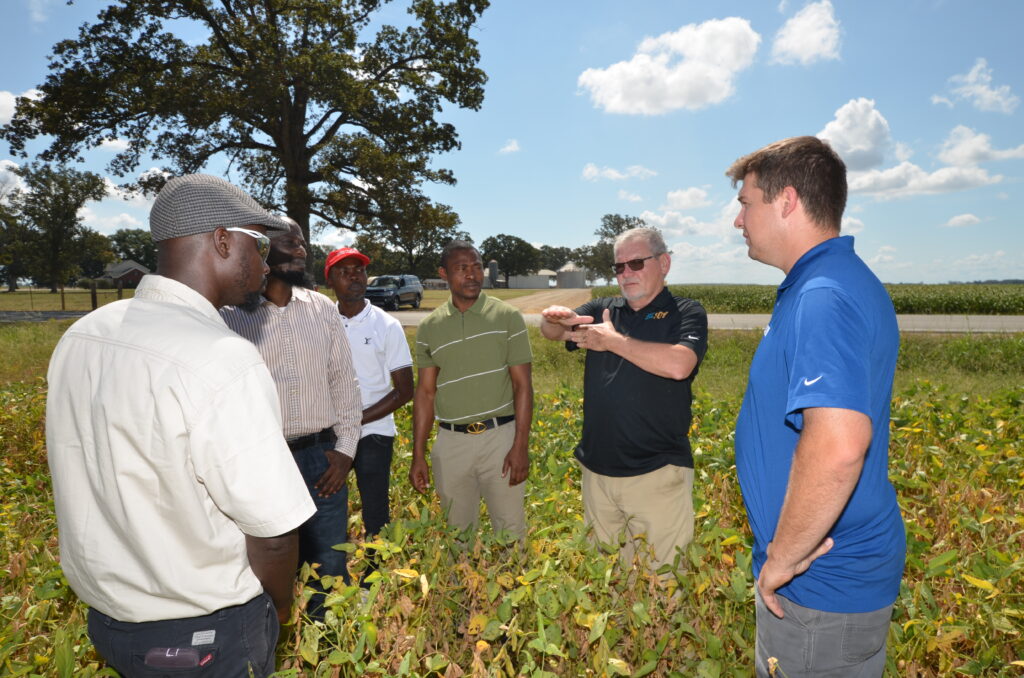
Nigerian aquaculture feed manufacturers are taking new ideas and inspiration back to Africa’s most populous country as a result of participating in ASA’s World Initiative for Soy in Human Health program’s educational trade team. USB Executive Committee Member Philip Good and family hosted the team at their Mississippi farm on Aug. 30 where they witnessed U.S. soy’s quality as well as its role in catfish production.
Trade team members reported that the farm visit demonstrated good stewardship of natural resources, quality grain storage, the value of attracting the younger generation to agriculture for sustainability, and more. They also saw how U.S. soy benefits from the use of technology that optimizes productivity and greater potential to source U.S. soy.
Mississippi State University also hosted WISHH’s USB-supported trade team. They met with leaders of the Global Center for Aquatic Health and Food Security as well as the U.S. Agency for International Development Feed the Future Innovation Lab for Fish. A tour of the Mississippi Chemistry Lab paired well with WISHH’s ongoing work with these feed manufacturers to produce quality feeds and to train farmers on them as well. The availability of commercial feed pellets is a bottleneck for Nigeria, which is home to a 2.5-million-ton deficit production of fish.
USB’s partnership with WISHH includes projects that support building the use of U.S. soy in feeds and foods in Nigeria. More than 60 percent of Nigeria’s population of 190 million population are under 25 years of age so food security and attracting youth to agriculture are key to the country. WISHH is building the next generation of aquaculture specialists (and future soy trade partners) in sub-Saharan Africa. Through more than two decades of experience in Nigeria, WISHH cultivates strong partnerships that strengthen the ties with U.S. soy and explore possible expansion in the region.
